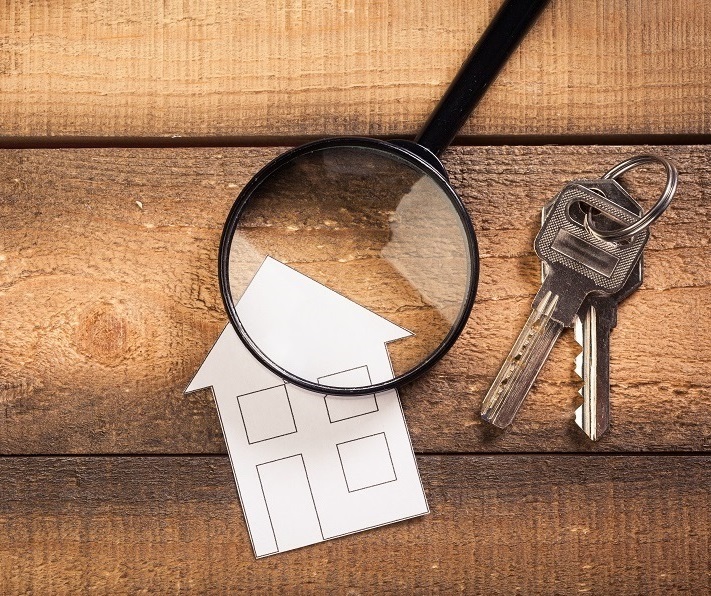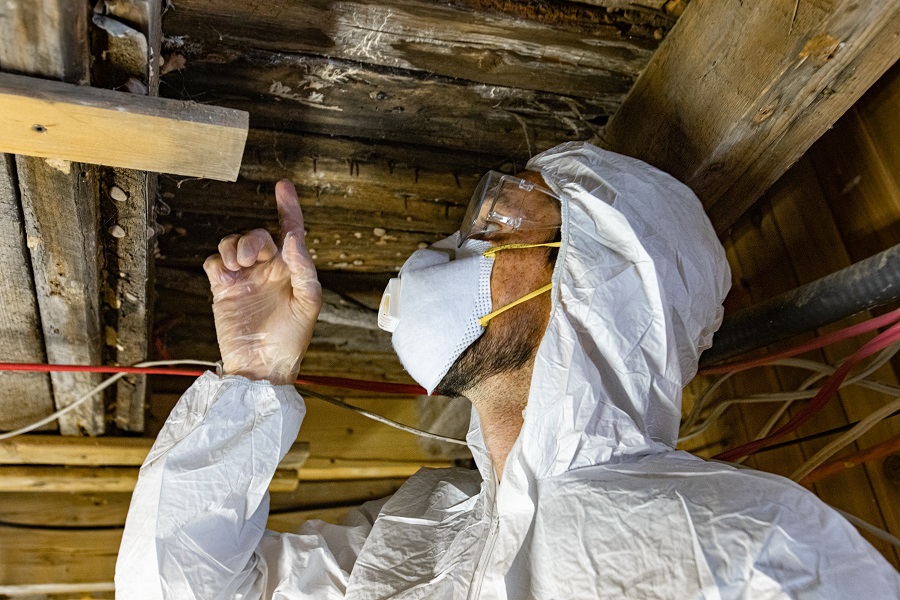What is dry rot?
Dry rot is a common term for various kinds of wood-decay fungus. The wood is broken down by fungi, as the Mycelium decomposes the wood, resulting in fine dust particles that are made of sawdust and wood chips, forming colonized areas that are referred to as fungal blooms. Dry Rot fungal spores require a suitable place to land and start their colonies before spreading through the underlying wood. Many of the spores are already present in woods that are already affected by dry rot and in the soil.
It also means that dry rot cannot live in so-called “humidified” lumber that is kept at 15% moisture with a wetted surface. While Dry Rot can be harder to spot, it is potentially more damaging than wet rot. It normally occurs where you are not looking. They can be under your floorboards, behind the plaster or in your loft. And while you might be tempted to ignore the signs, it’s crucial to identify them and take action immediately.
What is the difference between dry rot and wet rot?

Dry Rot Treatment and Services
What are the causes of dry rot?
Dry rot is caused by different species of fungi. The most commonly found in the Deptford is Serpula Lacrymans. it can spread from your home’s walls to the floors, and even the plaster is not fixed soon enough. Blocking up your timber may save on heating/cooling costs, but it may also affect the structural integrity of your entire house. Dry rot attacks when you have an unhealthy amount of moisture in your timber. This will attract the fungus that will use this moisture to extract nutrients. The word “dry rot” is used to differentiate between “wet wood” and “dry wood rot.”
Wet wood survives on the dry rot. While fungal spores need over 30% wetness to generate hyphae after this, these hyphae only need 20% wetness to survive. These hyphae can grow into a fungal body called a mycelium, which can also spread to find more timber in stone and brick. Once the rot has taken over, it weakens the wood and leaves behind a skeleton structure of the wood, removing H2O, cellulose and hemicellulose from your wood. You’ll need a private survey to tell if your wood deterioration is caused by dry rot or another kind of fungus. This is very important as the treatments for these damages will differ depending on the exact cause.
The dangers of dry rot in Deptford
Dry Rot Effect on your Property
Dry rot can be highly detrimental to the integrity of your home. Dry Rot will slowly and silently break down the structural timber of your property. In serious cases, this can trigger various parts of your house to break apart. It won’t attack the mortar between your bricks or stones, but it can travel through it. That is why routine checks are necessary.
Dry rot is a ravaging condition that affects your home and must be addressed immediately. It is important to call a Dry Rot Expert immediately before your home sustains serious damage. If you think you might have a problem with dry rot, get a survey from Southern Damp Proofing today.
Dry Rot Effect on Your personal health
It’s not the disease that causes dry rot that is dangerous. Regrettably, if dry rot does occur, the structural damage may be extensive to your health. If you suffer from respiratory problems, asthma or allergies and don’t have a smoke alarm, then this guide is for you.
What are the Warning Signs of Dry Rot?
The earlier you discover dry rot, the less time and money you’ll need to spend treating it and initiating remedial works. If you see some of the signs and symptoms listed below, a complete examination is recommended.
The beginning of the dry rot cycle
The spores are carried by wind. They may be nocturnal but they will also feed on timber during the day if there are carried onto timber. When they feed on it, they will then germinate and create hyphae, if the timber is giving them enough nutrients to do so. As these hyphae grow and feed, they will join up into a spider web-looking collection called mycelium. Mycelium can be light grey to pure white. Mycelium is mostly found between property’s bricks, mortar and plaster and can also try and spread into timber greatly.
Your timber is damaged.
It affects every part of the wood, from the bark to the core, causing it to wither and die. This could lead to the collapse of your timber. You might notice rot in new wood darkening your wood color. Scientists have discovered that dry rot can lead to something called cuboidal cracking. Cuboidal cracking occurs when the wood breaks into cubes that are about 50 mm in width. The distinctive symptom of white rot in wood is a creamy colour to the wood due to a white fungal growth called “hyphae”. Hyphae are spider-like fungal growth, they look like cobwebs and are a common symptom of dry rot.
Your timber will smell.
Dry rot attacks the timber, leaving it with a distinct fungal and musty odour. This can occur even if you can’t see a dry rot outbreak. However, it may be that there is just a smell rather than rot.
Your timber will have fungus bodies on it.
This is the final stage of dry rot and the most noticeable. Fruiting bodies like Mushroom can start to attach themselves to your wood. As the timber dries out, the fungus inside can no longer feed off the timber, in order to survive, it pumps its spores out to infect more wood.
Damp Proofing Can Help Prevent
- Rising / Penetrating Damp
- Ingress of Water
- Salt Crystallization
- Plaster Breakdown
- Damp Staining
- Wet Rot / Dry Rot
Contact Southern Damp Proofing Now to Speak With an Expert
Dry Rot Treatment in Deptford
Only when moisture levels are over 20 percent will a dry rot infestation occur. The first defense to eliminate the presence of fungus lies on controlling the levels of moisture in your living space or property. You are now in charge of the moisture levels. We suggest that you consult a professional for your dry rot treatment.

An expert can insert into your timber Boron rods. Boron is a hazardous material, hence damp proofing experts wear the protective clothing. Our damp proofing team will find and fix your leaks and resolve any dry rot damage. If left untreated, dry rot can lead to the structural failure of a wooden structure. If dry rot is not treated promptly, it can spread across your property and do real harm. Our high-performance products and extensive experience allow us to efficiently address your damp proofing problems.* Please don’t wait until it’s too late. If you think you have a problem with dry rot, call 020 7971 1329 for a free survey, and effective treatment today.
How can you prevent dry rot damage in Deptford?
The elimination of dry rot is the first treatment process. A dry rot infestation will occur in any wooden areas of the house that traps ample water and is subject to moisture/moisture ingress. Here are several techniques that will save them from forming: Always ensure there are no leaks in your property. Provide proper, sufficient ventilation.
Well, ventilate and enclose the attic. Correctly ventilate crawl spaces. Waterproof the exterior of your home by sealing the basement and crawlspace floors with our durable, waterproof sealers. To ensure the water is correctly guided, check all flickering walls and roofs. Ensure clear downspouts and drains. Check for filling/heating leakage if a “wet” device is used. Owing to the humid conditions needed for dry rot fungus to be fed and germinated, the easiest way to reduce the possibility of dry rot is to decrease moisture levels. For example, if you have a pipe that is leaking, plugging the leak can help prevent dry rot.

Dry rot is caused by moisture getting into the wood, it is important to contact us right away because dry rot can spread quickly. Contact Southern Damp Proofing Services for quality damp proofing services on 020 7971 1329.
FAQ’s
Where can dry rot grow?
How can I confirm that I have dry rot?
Is dry rot serious?
If dry rot is left unchecked what will happen?
Will dry rot stretch?
How wide is Dry Rot able to spread?
How do I discover how far Dry Rot has spread?
Can my dry rot problem be treated effectively by you?
Should I restore or replace dry rot?
For Top Quality Damp Surveys & Treatments
Other Areas We Cover
- Dry Rot Treatment in Clapham, London
- Dry Rot Treatment in Coulsdon, London
- Dry Rot Treatment in Crayford, London
- Dry Rot Treatment in Croydon, London
- Dry Rot Treatment in Dagenham, London
- Dry Rot Treatment in Ealing, London
- Dry Rot Treatment in East-Ham, London
- Dry Rot Treatment in Edgware, London
- Dry Rot Treatment in Edmonton, London
- Dry Rot Treatment in Eltham, London